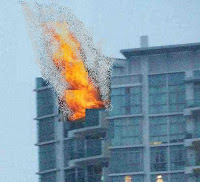Jan 16, 2007
Hospital prices fell after bills were made public
· A study found a drop in the cost for 25 of the 29 more common treatments in the five public hospitals.
· The biggest drop was for the treatment of pneumonia, which fell 21.6 per cent in B2 class and 24.3 per cent in C class.
Cheaper prices not at the expense of patient care or length of stay, says study
By Salma Khalik, Health Correspondent
THE cost of many hospital treatments has fallen for subsidised patients since bills from various hospitals were made public.
On average, C class patients paid 9.6 per cent less and B2 class patients 4.1 per cent less between January 2004 and April 2005, according to a survey reported in the Singapore Medical Journal this month.
In September 2003, the Ministry of Health started to publish actual hospital bills to help patients and their doctors estimate treatment costs and, perhaps, compare prices.
The bills for the 70 treatments, which account for two-thirds of all hospital admissions, include all costs, such as hospital stay, medicine, surgery and any tests.
The disclosures resulted in immediate price cuts at hospitals that were clearly more expensive than others.
The study, however, examined how prices moved over a longer period, and found that for many treatments, the costs have been whittled down.
The study by three doctors, led by Changi General Hospital chief operating officer Wong Chiang Yin, focused only on the more common treatments. They chose treatments where all five public hospitals had at least 30 patients per ward class a year.
Only 29 of the 70 treatments in the B2 and C classes qualified. But even so, 46,000 cases were looked at. Subsidised patients in these ward classes make up two-thirds or more of public hospital patients.
The team found a drop in the cost for 25 of the 29 treatments. They attributed this to competition arising from publicity given to hospital pricing.
==================================================================
The questions we should be asking is for how long will the prices stay? Like they say better protected than never!
Click here to contact us!
 er your risks
er your risks




